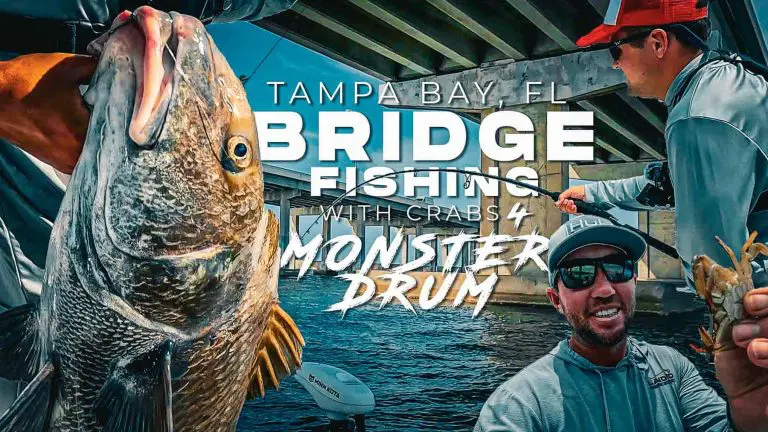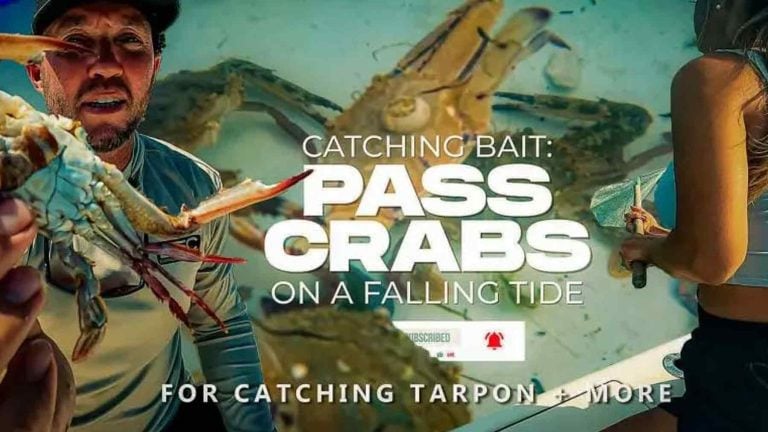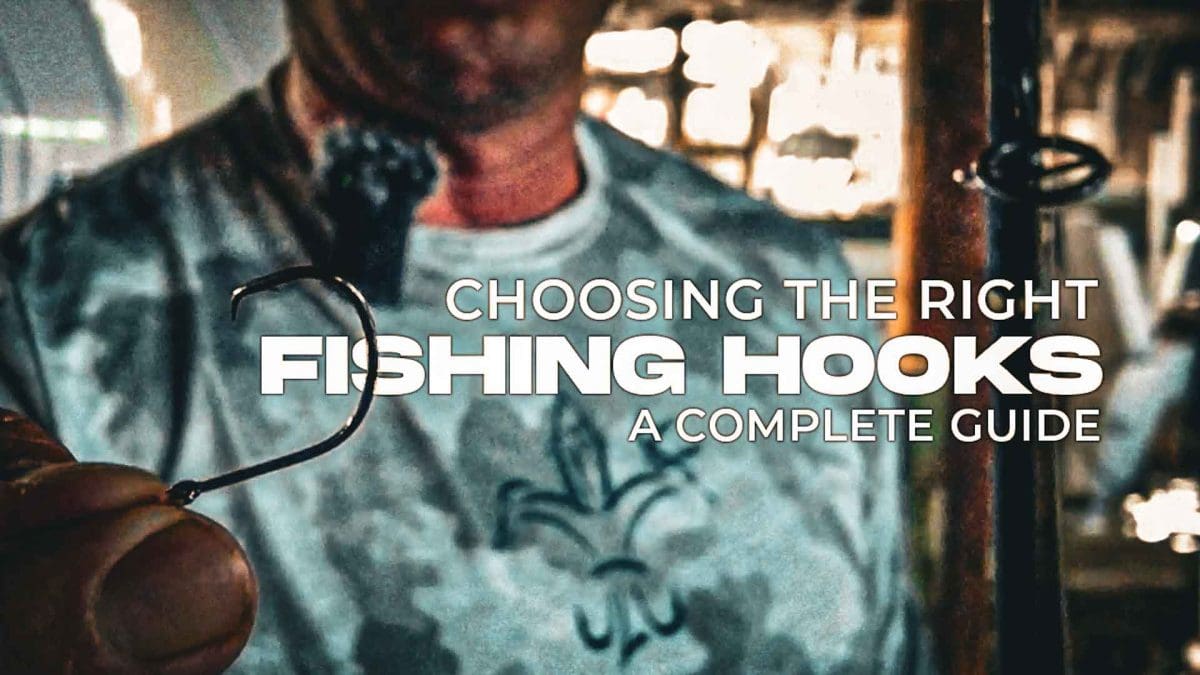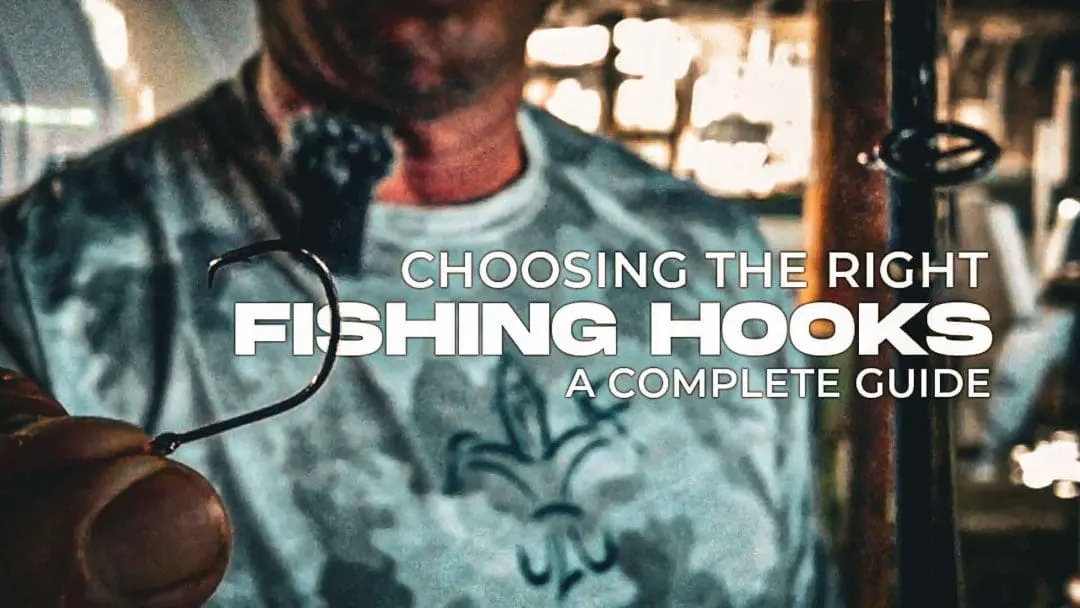Confidence in your terminal tackle can make all the difference in a full or empty ice chest
Fishing Hooks for Saltwater Fishing
Whether you are a seasoned angler or just starting out, selecting the right fishing hook is important for a successful fishing trip.
Let’s explore the various aspects of fishing hook selection, including hook sizes, types, materials, and more.
J-Hooks:
J-Hooks are the most widely used and versatile hooks. Their shape resembles the letter “J” and is commonly employed in bait fishing.
J-Hooks come in different sizes and are effective for catching a wide range of fish species.
Circle Hooks:
Circle hooks are known for their unique design, featuring a circular shape and a point that turns inward.
Circle hooks are popular for catch-and-release fishing, as they tend to hook fish in the corner of the mouth, reducing the chances of deep hooking and injury.
Treble Hooks:
Treble hooks consist of three hooks fused together. They are commonly used in lures, such as crankbaits and spoons, to increase the chances of hooking a fish when it strikes.
Treble hooks are often found in various sizes to accommodate different lure types.
Offset Hooks:
Offset hooks have an angled bend just below the eye, which helps increase hook-up rates.
Offset hooks are commonly used in worm fishing and allow for better presentation, reducing the chances of the bait fouling or getting stuck.
Circle Octopus Hooks:
Circle octopus hooks combine the unique characteristics of circle hooks and octopus hooks.
Circle Hooks are highly effective for live and cut bait fishing, especially for species like catfish and saltwater game fish.
What’s a great knot to use for saltwater fishing?
The uni-knot, improved clinch knot and the Palomar knot are popular choices for securing hooks to the line. They offer strength and reliability.
Tying a Uni-Knot
Targeting Smaller Fish
Use smaller hooks (sizes 1/0 to 4/0) for inshore species like redfish, trout, and flounder.
Targeting Larger Fish
For larger species like snook and tarpon, opt for larger hooks (4/0 to 7/0+).
Common Saltwater Fishing Styles and Popular Hook Types
| Saltwater Fishing Style | Best Hook Types |
|---|---|
| Bottom Fishing | Circle Hooks, J-Hooks, Octopus Hooks |
| Live Bait Fishing | Circle Hooks, Live Bait Hooks |
| Trolling | Big Game Hooks, Offshore Hooks |
| Jigging | Assist Hooks, Jig Hooks |
| Surface Lures/Poppers | Treble Hooks, Single Hooks |
| Fly Fishing (Saltwater) | Saltwater Fly Hooks |
| Casting/Spinning | Treble Hooks, Single Hooks |
| Spoon Lures | Single Hooks, Treble Hooks |
| Plastic Soft Baits | Offset Worm Hooks, Wide Gap Hooks |
| Shark Fishing | Circle Hooks, J-Hooks, Wire Hooks |
| Inshore Fishing | J-Hooks, Circle Hooks, Offset Worm Hooks |
Fishing Hook Styles and Uses
Selecting a Hook Style
J-Hooks:
Great for live bait and cut bait presentations. Ideal for species with softer mouths like trout and flounder.
Circle Hooks:
Preferred for catch-and-release. They tend to hook fish in the corner of the mouth, reducing injury. Effective for snook, redfish, and tarpon.
Fishing Hook Material
Stainless steel hooks will be much more corrosion-resistant and suitable for saltwater fishing.
Barb or Barbless Fishing Hooks:
Consider barbless hooks if you plan to release fish. They minimize damage and make hook removal easier.
Deciding on Bait & Presentation:
Match hook size to your bait or “Match the Hatch” when it comes to bait selection. Smaller hooks work well with smaller baits like shrimp, while larger baits like mullet require bigger hooks.
Setting the Hook:
When using circle hooks, avoid forcefully setting the hook. Instead, let the fish take the bait and then begin reeling to allow the hook to set itself.
Fishing hooks come in various types, each designed for specific fishing techniques and target species.
Understanding the different types will allow you to make good decisions when selecting the most suitable hook for your fishing objective.
The two sizes commonly used to describe fishing hooks are the smaller hook sizes (e.g., 32, 30, 28, etc.) and the larger hook sizes (e.g., 1/0, 2/0, 3/0, etc.).
Common Fishing Hook Sizes
Fishing Hook Sizes
Using the wrong hook size can result in missed bites or even hook breakage.
| Hook Size | Recommended Fish Species |
|---|---|
| 32 | Small panfish, crappie, bluegill |
| 30 | Panfish, crappie, bluegill |
| 28 | Panfish, crappie, bluegill |
| 26 | Panfish, crappie, bluegill |
| 24 | Panfish, crappie, bluegill, small trout |
| 22 | Panfish, crappie, bluegill, trout |
| 20 | Trout, perch, small bass, panfish |
| 18 | Trout, perch, bass, catfish, walleye |
| 16 | Bass, walleye, catfish, larger trout |
| 14 | Bass, walleye, catfish, larger trout |
| 12 | Bass, walleye, catfish, larger trout |
| 10 | Bass, pike, walleye, catfish, larger trout |
| 8 | Bass, pike, catfish, walleye, redfish, snook |
| 6 | Bass, pike, catfish, redfish, snook, grouper, tarpon |
| 4 | Bass, pike, redfish, snook, grouper, tarpon, tuna |
| 2 | Bass, pike, redfish, snook, grouper, tarpon, tuna |
| 1 | Bass, pike, redfish, snook, grouper, tarpon, tuna |
| 1/0 | Striped bass, tarpon, grouper, snapper, sailfish |
| 2/0 | Striped bass, tarpon, grouper, snapper, sailfish |
| 3/0 | Striped bass, tarpon, grouper, snapper, sailfish |
| 4/0 | Striped bass, tarpon, grouper, snapper, sailfish |
| 5/0 | Striped bass, tarpon, grouper, snapper, sailfish |
| 6/0 | Striped bass, tarpon, grouper, snapper, sailfish, marlin |
| 7/0 | Striped bass, tarpon, grouper, snapper, sailfish, marlin |
| 8/0 | Striped bass, tarpon, grouper, snapper, sailfish, marlin |
| 9/0 | Tarpon, grouper, snapper, sailfish, marlin |
| 10/0 | Tarpon, grouper, snapper, sailfish, marlin |
| 11/0 | Tarpon, grouper, snapper, sailfish, marlin |
| 12/0 | Tarpon, grouper, snapper, sailfish, marlin |
Considerations When Choosing Fishing Hooks
Apart from size and type, several other factors should be taken into account when selecting fishing hooks.
Fishing Location:
The fishing location plays a big role in hook selection. Different habitats may require different hook styles and sizes.
For example, when fishing in heavy cover or thick vegetation, using weedless hooks can prevent snagging and improve your chances of landing a fish.
Recommended Hook Sizes for Fish:
The species you are targeting will influence the choice of fishing hooks.
Different fish have different mouth shapes and sizes, requiring specific hook designs to ensure proper hooksets.
Hook Sizes for Saltwater Fish
Common Fishing Hook Sizes for Saltwater Fish
| Hook Size | Fish Species |
|---|---|
| 6 | Flounder, Snapper, Croaker |
| 4 | Snapper, Sea Trout, Redfish |
| 2 | Sea Trout, Redfish, Bluefish |
| 1 | Bluefish, Striped Bass, Mackerel |
| 1/0 | Striped Bass, Snook, Tarpon |
| 2/0 | Snook, Tarpon, Grouper |
| 3/0 | Grouper, Tuna, Cobia |
| 4/0 | Tuna, Cobia, Sailfish |
| 5/0 | Sailfish, Marlin, Shark |
| 6/0 + | Marlin, Shark, Swordfish |
Common Questions about Saltwater Fishing Hooks:
What are the best hook types for saltwater fishing?
For saltwater fishing, strong and corrosion-resistant hooks are vital. Circle hooks, J-hooks, and offset hooks are popular choices.
What hook size should I use for different saltwater species?
Hook size depends on the target species. Generally, use smaller hooks for smaller fish like panfish, and larger hooks for bigger game fish like tuna or marlin.
How can I improve hook-set success in saltwater fishing?
Ensure your hooks are sharp, and use a swift and steady hook-setting motion when you feel a bite. Maintain tension on the line to avoid slack.
What’s the advantage of using circle hooks in saltwater fishing?
Circle hooks are known for their higher hook-up rates and reduced chances of gut-hooking fish. They are ideal for catch-and-release practices.
Which hooks work best for live bait?
For live bait, consider using offset or J-hooks. Match the hook size to the bait’s size to present it naturally to the fish.
Hook Sizes for Freshwater Fish
Fishing Hook Sizes for Freshwater Fish
| Hook Size | Fish Species |
|---|---|
| 6 | Bluegill, Sunfish |
| 4 | Crappie, Small Bass |
| 2 | Largemouth Bass, Catfish |
| 1 | Largemouth Bass, Catfish |
| 1/0 | Largemouth Bass, Carp |
| 2/0 | Carp, Northern Pike |
| 3/0 | Northern Pike, Muskie |
| 4/0 | Muskie, Large Catfish |
| 5/0 | Muskie, Large Catfish |
Common Questions about Freshwater Fishing Hooks
What hook styles are best for freshwater fishing?
For freshwater, popular hook styles include bait-holder hooks, octopus hooks, and Aberdeen hooks, depending on the fishing technique and species targeted.
What hook size is suitable for different freshwater fish species?
Match the hook size to the fish’s mouth size. Use smaller hooks for small species like bluegill and larger hooks for bigger fish like bass or pike.
Are treble hooks better than single hooks for freshwater lures?
Treble hooks provide better hooking potential, especially for lures with multiple points of contact. However, they can cause more damage to fish, so consider using single hooks for catch-and-release.
How can I prevent fish from stealing my bait?
To prevent bait theft, use bait-holder hooks or add bait securely to the hook. Also, consider using smaller pieces of bait so the fish can’t nibble without getting hooked.
Should I use weedless hooks in freshwater fishing?
Weedless hooks are beneficial when fishing in areas with dense vegetation or cover. They reduce the chances of snagging and make it easier to retrieve lures.
What’s the best way to remove a deeply swallowed hook from a fish?
If the hook is deeply swallowed and difficult to remove without harming the fish, it’s best to cut the line close to the hook and release the fish with the hook in place. It will usually dissolve over time.
How can I avoid hooking into unwanted species in freshwater?
Use specific bait types and sizes targeted towards the species you want to catch. If unwanted species persist, consider moving to a different location or adjusting your fishing technique.
Can I use the same hooks for artificial lures and live bait in freshwater?
Yes, many hooks work well with both artificial lures and live bait. Just ensure the hook size and style are appropriate for the type of bait you’re using.
What’s the advantage of using circle hooks in freshwater fishing?
Circle hooks can be effective for catch-and-release fishing in freshwater as well. They often hook the fish in the corner of the mouth, minimizing injury.
How should I store freshwater fishing hooks to prevent rusting?
Keep your hooks in a dry and ventilated tackle box. Adding moisture-absorbing packs can help reduce humidity and prevent rusting.
Smaller Hook Sizes
The smaller hook sizes are denoted by whole numbers, starting from the smallest size, which is typically 32.
In this sizing system, as the number increases, the physical size of the hook decreases. So, a size 32 hook is smaller than a size 30 hook, and a size 30 hook is smaller than a size 28 hook, and so on.
Small hooks are commonly used for catching small fish species like panfish (e.g., bluegill, crappie) or when using tiny baits like insects or larvae.
Smaller hooks are also preferred when targeting fish with smaller mouths, as using an overly large hook can hinder successful hooksets or cause the hook to be less secure in the fish’s mouth.
Larger Hook Sizes
The larger hook sizes are denoted by numbers followed by a forward slash and another number, such as 1/0, 2/0, 3/0, etc.
In this sizing system, as the number increases, the physical size of the hook increases as well. For example, a 2/0 hook is larger than a 1/0 hook, and a 3/0 hook is larger than a 2/0 hook.
These larger hooks are suitable for targeting bigger fish species like bass, snapper, grouper, or tarpon, which have larger mouths and require bigger hooks to accommodate their size.
The use of larger hooks is also common when using larger baits or artificial lures, where the larger hook helps secure the bait properly and improves the chances of hooking larger fish.
Bait Selection:
The type of bait you plan to use also impacts the hook you should choose.
Some baits work better with certain hook styles, while others may require special rigging techniques.
Matching your hook to the bait you are using will optimize your chances of attracting fish and getting solid hooksets.
Fishing Technique:
Various fishing techniques, such as bottom fishing, fly fishing, or trolling, require specific hooks to maximize effectiveness.
The nuances of your chosen fishing technique will guide you towards selecting the appropriate hook.
Selecting Fishing Hooks
Explore More

Tampa Florida's Skyway Bridge Fishing Pier Join us as we team up with GrouperMVP, The Ballyhoop Net and the…

Tampa Bridge Fishing using Crab for Monster Fish Join the crew with Hog Squad Fishing and Tsunami Tackle as…

Catching Pass Crabs for Tarpon Season Welcome to another thrilling adventure with Captain Randall and his crew, where we're…


